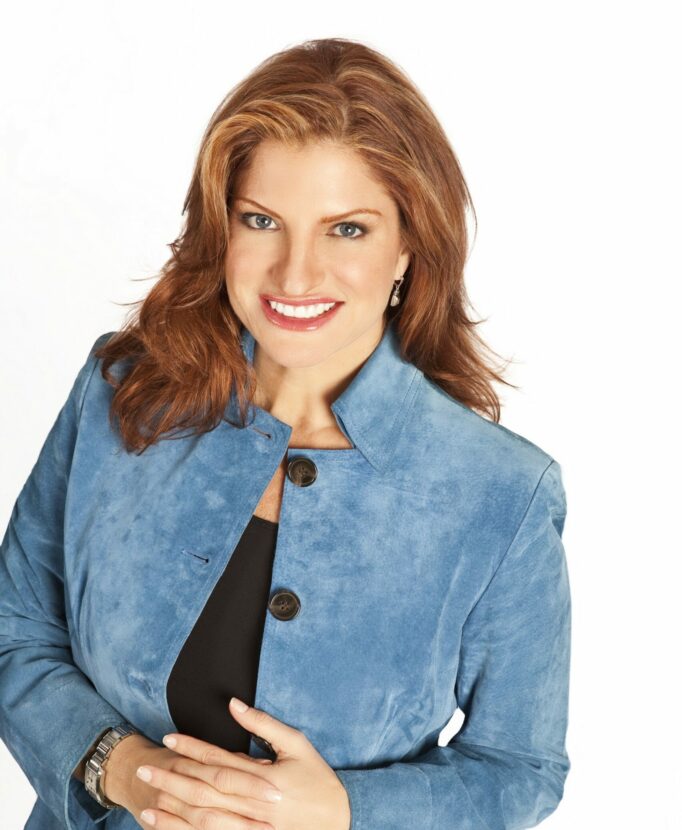
Alexis Abramson
A Conversation with Alexis Abramson
Alexis Abramson on Longevity 2.0
A Conversation with Alexis Abramson

Keynote Speaker
Generational Innovation Expert, Emmy and Gracie Award Winning Journalist, Author of Several Highly Acclaimed Multi-Generational Books
A global generational expert who uses her unique understanding of demographic trends to create solutions applicable to both the B2B and B2C marketplace. Alexis Abramson developed a proven formula to assist organizations managing multi-generational workforces as they recruit, engage and unite their employees.
CONTACT WSB FOR Alexis Abramson'S SPEAKING FEES

A powerhouse global authority on generational marketing, demographics and workforce implications. TIME magazine said: “Few entrepreneurs have focused more sharply on the needs of multi-generations than Dr. Alexis Abramson.”
Dr. Alexis Abramson earned her doctorate in the science of aging and has over 25 years of experience working as a generational expert. She is highly-sought after to appear at industry conferences, bringing awareness of the intergenerational dynamic between five distinct generations to Fortune 100/500 corporations, consumers, government agencies, and non-profits.
Abramson possesses a depth of knowledge and experience — from both a B2B and a B2C perspective — around the implications associated with employing and marketing to multiple generations. Her presentations incorporate not only lifestyle and lifestage cohort characteristics, but also show compelling ways to bridge the gap between generations.
Positioned as a C-suite consultant, Abramson works closely with business development, sales, and marketing teams as they create strategy plans and develop target-rich collaterals geared toward cross -generational population segments. In addition, she instructs employers on how to be more sensitive to the specific needs of each generational cohort. She incorporates powerful real-world examples from companies she has worked with that have targeted multi-generations and consequently experienced dramatic increases in bottom line results.
Dr. Abramson has consulted for many major organizations, including Duracell, Arthritis Foundation, Sanofi, L’Oreal Paris, Philips, Harvard, BMO Private Bank, Siemens, COMCAST, Beltone, Service Corporation International, Kroger, AAA, Marriott, Northwestern Mutual, , Proctor & Gamble, Century 21, Humana, AIG, Subway, National Golf Foundation, Genworth, Kimberly-Clark, Walmart, AARP and many more.
Mid-lifers, the 45 to 65 age cohort, will be over 80M in size for the next few decades reaching more than 96M by 2050. The Generation of Growth™ is not only the largest cohort but they also have the most disposable income. In fact, for the past 30 years those aged 45 – 65 have outspent all other age segments and there is no question that this trend will continue for the foreseeable future. In addition, approximately $12 – 15T has already been inherited by the Gen “G” population allowing their spending potential to grow exponentially.
Representing one quarter of the nation’s population, millennials are quickly approaching the title of largest cohort in the United States. Between the years 1981 and 1996 over 80 million millennials were born and within the next few years one in three Americans will be millennials. In addition, millennials are fast approaching 38 percent of the U.S. workforce and 75 percent of the global workforce.
One-third of older millennials have earned at least a four-year college degree, making this bold and inventive group the best educated in U.S. history. However, this accolade didn’t come cheap – they face $1 trillion in student debt. Regardless of their student debt, millennials’ financial assets are still projected to grow from $1.4 trillion in 2015 to $11.3 trillion in 2030. There is no doubt that this quirky generation with limitless potential will affirm their status as new drivers of consumption going forward.
Over 77 million “baby boomers” were born between 1946 and 1964. Every 8 seconds someone in this country turns 65 years old and by 2050 there will be more than one million Americans turning 100.
The economic power of this generation is nothing to be ignored. Boomers control 70 percent of disposable income, over 77 percent of the country’s assets and research shows that they are prepared to spend it. In addition, baby boomers are accumulating much more wealth than their younger counterparts, now accounting for more than $3 trillion in consumer spending.
They not only wield enormous buying power these mature adults account for over 50 percent of all consumer goods sales, 77 percent of prescription drug sales, 80 percent of leisure travel spending and 41 percent of all new car purchases. In addition, despite the 2008 recession, baby boomer spending is up an astonishing 45 percent as compared to the previous ten years.
For the first time in history, we now have five generations working alongside each other — the silent generation (born 1928-45), baby boomers (born 1946-64), generation X (born 1965-80), generation Y/millennials (born 1981-96) and Gen Z (born 1995 and 2015). There is no doubt that this multi-generational workforce is presenting significant challenges to leadership and communication in the workplace.
The differences between each generation are often quite significant in a business environment. For example, when it comes to making decisions, members of the silent generation and baby boomers normally take a more collaborative approach, often seeking buy-in for a given course of action prior to deciding. On the other hand, younger employees tend to embrace more risk, and make faster decisions with less suggestions/opinions.
The aggregate “cost of caregiving” in lost productivity and absenteeism to United States businesses is between $13.4 and $25.2 billion per year. There are over 44 million caregivers in the United States. Almost 133 million people in the U.S. have one or more chronic condition and by 2020 this number is expected to increase to 157 million Americans. Nearly 31 percent of U.S. households are involved in caring for a relative or friend who is ill or disabled. Caregiving is largely a women’s issue with over 75 percent of caregivers being female, mostly wives and adult daughters. Many of whom are in the sandwich generation taking care of their children while simultaneously caring for their aging loved ones.
At the turn of the 19th century the average life span was 50 – now we are expected to live to 80 years and beyond. So what do our 30 Bonus Years™ look like? How will we take advantage of them? What does research tell us that will allow us to live as healthy, happy, wealthy and wise as possible during this new life stage we’ve been “gifted?”
There are over 44 million unpaid caregivers in the United States, 10 million of whom are millennials — almost 133 million people in the U.S. have one or more chronic condition and by 2020 this number is expected to increase to 157 million Americans. Over one in three U.S. households is involved in caring for a relative or friend aged 55 or older. Many caregivers are caught between the needs of their young families and the daunting task of caring for their older relatives. Watching a loved one grow old is filled with emotional upheaval, when you compound that with other stresses — rush-hour traffic, deadlines, sick children, dirty laundry — caregivers are often left holding the bag. They feel a pressure to be all things to all people, often ending up as the martyr and giving themselves the short end of the stick.
Disruption and innovation are two words that have not traditionally been associated with aging. However, with 10,000 baby boomers turning 65 every day and controlling over $3 trillion of the nation’s GDP, there has never been a greater need for outside the box ideas and concepts geared toward this market segment.
Harnessing this ingenuity requires businesses to exercise their visionary minds and become skilled in the ability to be trendsetters of the next “big thing” in aging. As new products and services are developed, and existing ones adapted, learning to cater to this lucrative segment of the population is a must.
Tell us about your event and the speaker you are interested in booking and we will be in touch right away.